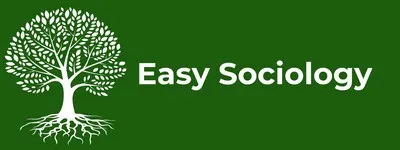Table of Contents
- Understanding Taxonomy in Sociology
- Theoretical Foundations of Taxonomy in Sociology
- Practical Applications of Sociological Taxonomy
- Challenges and Limitations of Sociological Taxonomies
- Case Studies: Taxonomy in Action
- The Future of Sociological Taxonomy
- Conclusion
Taxonomy is a term that originates from the biological sciences, where it refers to the classification of organisms into ordered systems based on shared characteristics. However, the concept of taxonomy extends beyond biology, permeating various fields, including sociology. In sociology, taxonomy serves as a tool to organize and understand complex social phenomena, offering a systematic way to analyze the structures, categories, and relationships that define human societies. This article delves into the sociological applications of taxonomy, exploring its theoretical underpinnings, practical uses, and implications for understanding social life.
Understanding Taxonomy in Sociology
What Is Taxonomy?
At its core, taxonomy is the science of categorization. It involves the classification of elements into groups based on shared attributes or relationships. In sociology, taxonomy provides a framework to categorize social phenomena such as institutions, behaviors, identities, and relationships. By organizing these elements into meaningful categories, sociologists can better understand the patterns and structures that shape human societies. These categorizations not only facilitate analytical clarity but also assist in identifying interconnections between diverse elements of social life.
Taxonomy operates as both a descriptive and interpretative tool in sociology. It enables scholars to describe social phenomena systematically while also offering interpretative insights into why certain phenomena are grouped together and how these groupings influence social dynamics. Whether examining macro-level structures like economic systems or micro-level interactions within communities, taxonomy is foundational to sociological inquiry.
Historical Context
The use of taxonomy in sociology dates back to the discipline’s early days, as pioneers like Auguste Comte and Emile Durkheim sought to classify social facts and institutions systematically. Comte, for instance, proposed a hierarchy of sciences, with sociology at the pinnacle, reflecting his vision of sociology as the integrative science capable of synthesizing insights from other disciplines. Durkheim introduced typologies to study social solidarity and collective consciousness, emphasizing the importance of categorization in understanding societal cohesion and variation.
As sociology evolved, so did its taxonomic approaches. Max Weber’s classification of authority into traditional, charismatic, and rational-legal types exemplifies the increasing sophistication of sociological taxonomies. These classifications provided nuanced frameworks for understanding power, legitimacy, and organizational dynamics, influencing generations of sociological research.
Theoretical Foundations of Taxonomy in Sociology
Structural Functionalism and Taxonomy
Structural functionalism, a dominant sociological paradigm in the mid-20th century, heavily relies on taxonomy to analyze social structures. Functionalists like Talcott Parsons categorized societal components based on their functions and contributions to social stability. For example, institutions such as family, education, and religion were classified as systems that fulfill essential societal needs, such as reproduction, socialization, and moral guidance.
This approach underscores the interdependence of societal elements, emphasizing how each category contributes to the overall functioning of society. By categorizing elements into functional systems, structural functionalism provides a holistic perspective on societal organization and change.
Conflict Theory and Taxonomic Critiques
While taxonomy can illuminate social order, conflict theorists critique its potential to reinforce existing power dynamics. Karl Marx and later conflict theorists argued that categorization often reflects the interests of dominant groups, marginalizing others. For instance, taxonomies of class, race, and gender can perpetuate inequalities by legitimizing hierarchical distinctions. A critical perspective on taxonomy reveals how categorizations may obscure exploitative relationships and entrench social divisions.
Contemporary conflict theorists extend this critique to global taxonomies, exploring how categories like “developed” and “developing” nations perpetuate unequal economic and political relations. By questioning the assumptions underlying such taxonomies, sociologists can uncover their role in maintaining systemic inequalities.
Symbolic Interactionism and Dynamic Taxonomies
From a symbolic interactionist perspective, taxonomy is not a static process but a dynamic one, shaped by social interactions and meanings. Categories are constructed, negotiated, and contested in everyday life. This perspective highlights the fluidity of social taxonomies and their dependence on context and interpretation.
For instance, the classification of social identities is an ongoing process influenced by cultural norms, individual agency, and collective action. The emergence of new categories, such as “nonbinary” gender identities, illustrates the dynamic and evolving nature of taxonomies within social interactions and cultural shifts.
Practical Applications of Sociological Taxonomy
Categorizing Social Institutions
Sociological taxonomies help classify social institutions into categories such as family, economy, education, and government. These classifications enable sociologists to examine the roles, functions, and interrelations of institutions in maintaining or challenging social order. By categorizing institutions, sociologists can identify patterns of institutional collaboration and conflict, offering insights into how societies adapt to changing conditions.
Typologies of Social Groups
Taxonomies are also used to classify social groups, ranging from primary groups like families and peer groups to secondary groups like organizations and communities. Such classifications provide insights into group dynamics, cohesion, and conflict. Understanding these classifications is particularly valuable for studying phenomena such as group identity formation, collective behavior, and organizational culture.
Identity and Stratification
Taxonomy plays a crucial role in understanding identity and social stratification. Categories of class, race, ethnicity, gender, and sexuality are central to sociological analysis, shedding light on how these identities intersect and shape individual and collective experiences. Intersectionality theory, for example, highlights the complexity of overlapping social categories, revealing how these intersections produce unique experiences of privilege and oppression.
By analyzing stratification through taxonomies, sociologists can explore patterns of inequality and their implications for social mobility, access to resources, and life outcomes. Such analyses inform policies aimed at reducing disparities and promoting social justice.
Cultural Classification
Culture, a cornerstone of sociology, is often examined through taxonomies of norms, values, symbols, and practices. These classifications help sociologists understand cultural diversity, change, and transmission across generations. For example, taxonomies of cultural consumption, such as Pierre Bourdieu’s distinction between high culture and popular culture, illuminate how cultural preferences reflect and reproduce social hierarchies.








